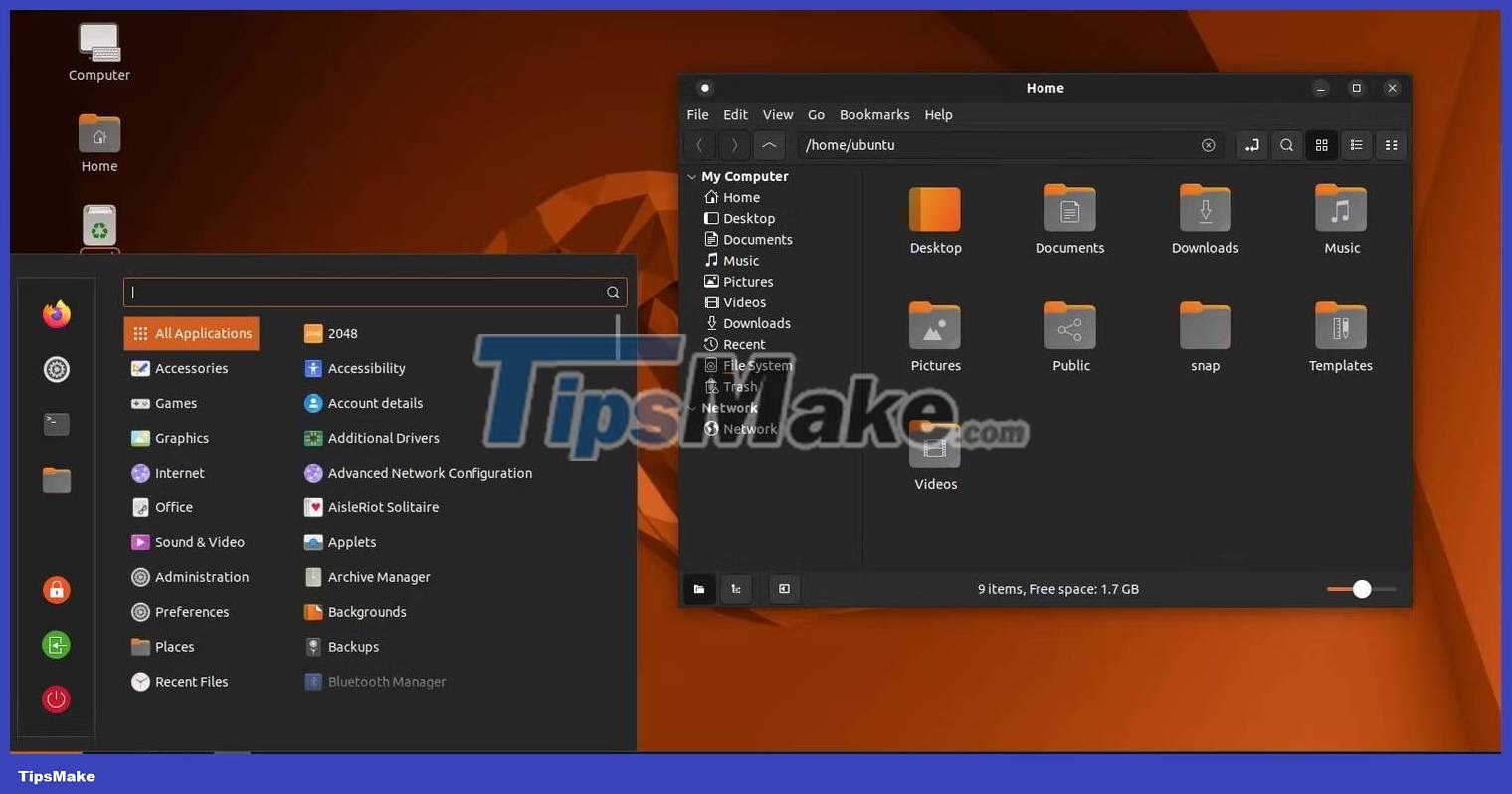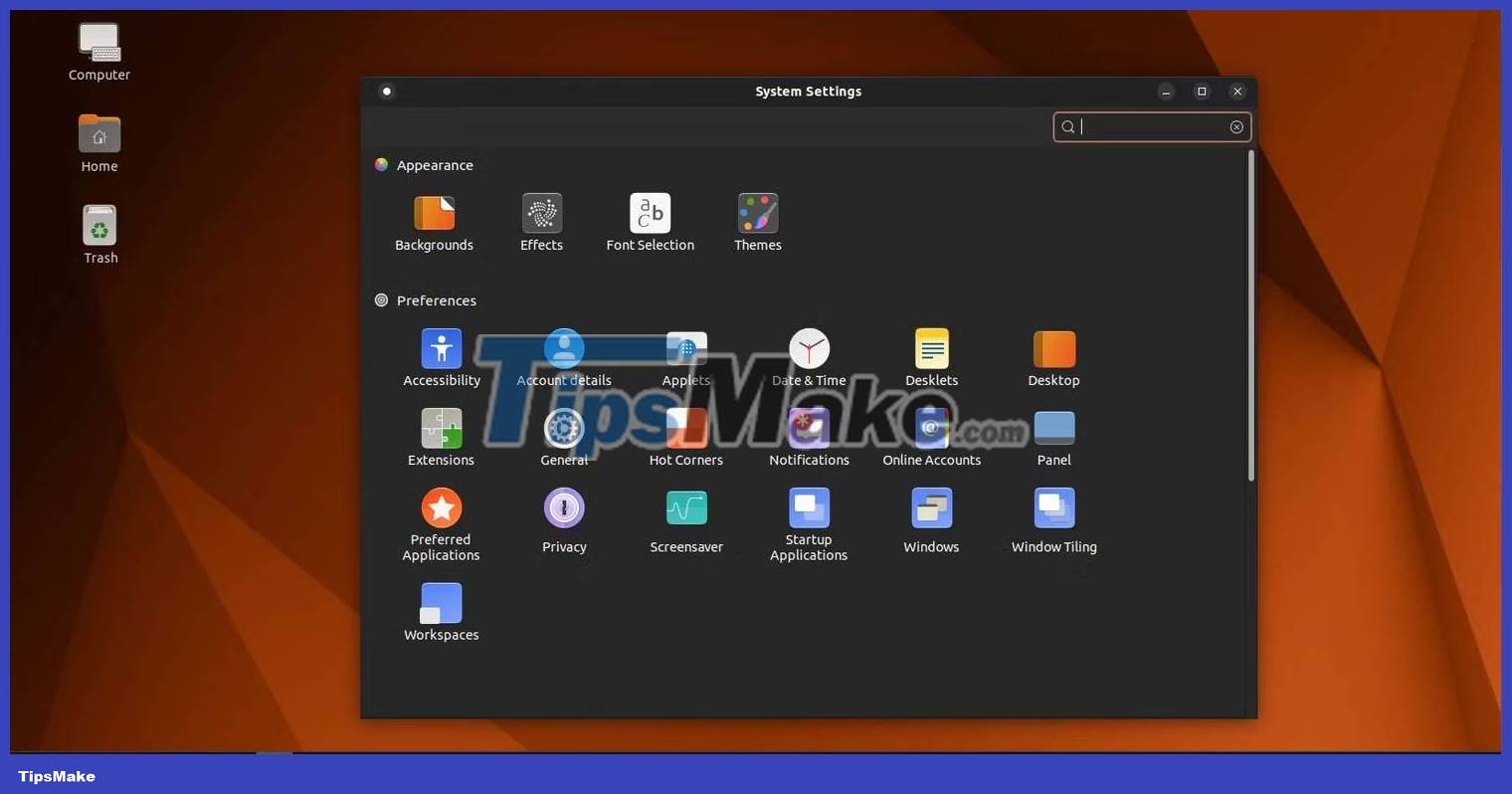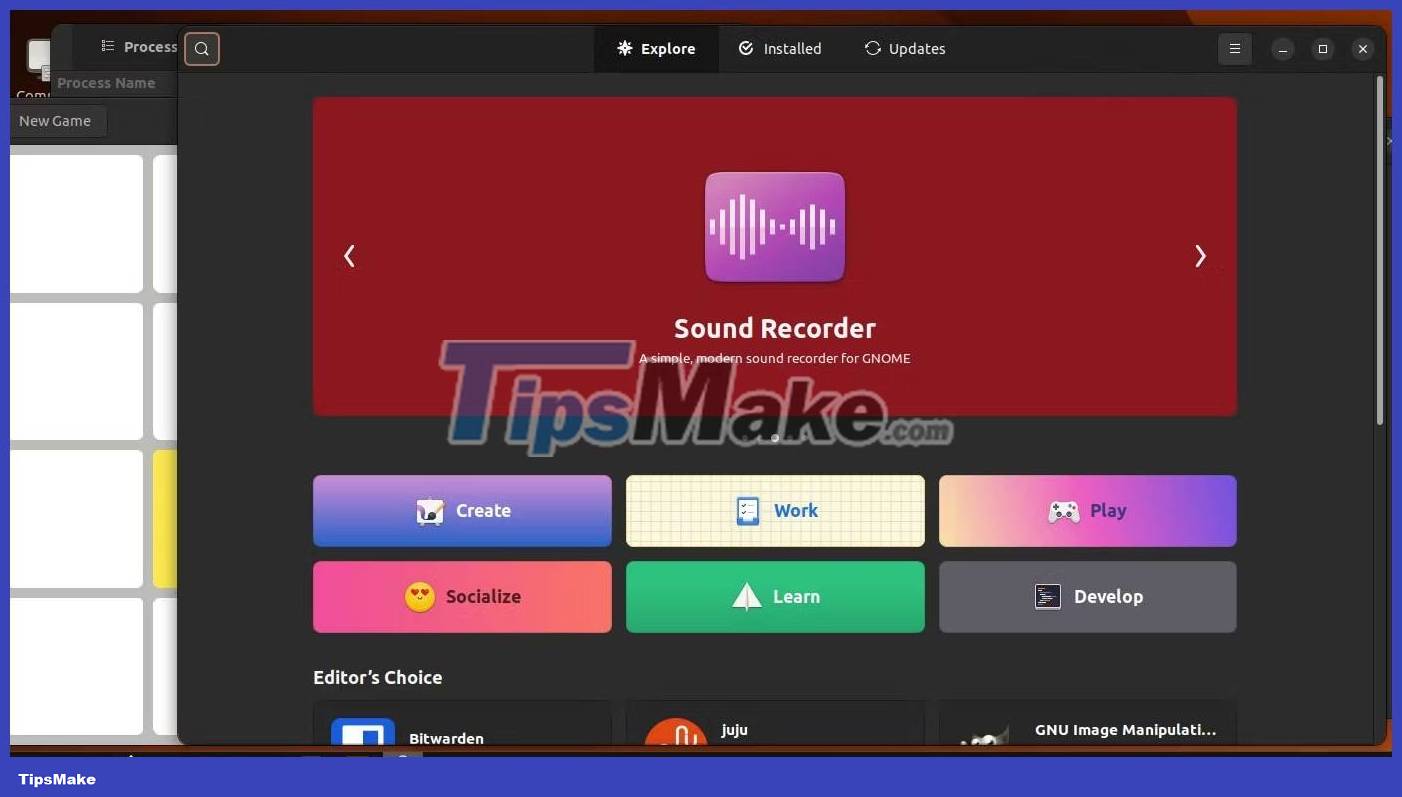5 Reasons Ubuntu Cinnamon Is Better Than Other Ubuntu Versions
Ubuntu Cinnamon became an official Ubuntu release in 2023. It gives you Ubuntu but with the Cinnamon desktop environment instead of GNOME.
Cinnamon isn't exactly the most groundbreaking interface, but not every Linux user wants to pursue something new and innovative. There are many reasons to choose Ubuntu Cinnamon over other Ubuntu versions.
1. Cinnamon looks a lot like Windows

Cinnamon has what many consider a traditional user interface. It's the desktop model that Windows has used for decades. There's a taskbar at the bottom, a menu at the bottom left to launch apps, and a system tray on the bottom right next to the clock.
You can create folders on the desktop or spread files across the screen or use the area to store application icons. The layout is so familiar that computer users without technical expertise might not realize they're running anything other than Windows (at least until the software is installed). And many tech-savvy people still appreciate that they get the benefits of Linux without having to completely change the way they use their computers.
2. Cinnamon is minimalistic but modern
Cinnamon is a smaller project than the GNOME and KDE versions of Ubuntu, but it's not the only option in this respect. Xubuntu's Desktop Xfce and Lubuntu's LXQt are also lightweight, which is the kind of Linux distribution you can run on an Intel Atom processor. Ubuntu MATE is similarly light on system resources. So why use Cinnamon?
Xubuntu and Lubuntu can both look like desktops from bygone eras. Despite the stable updates, it's nothing particularly different from a decade or two ago.
Likewise, MATE is a conservation effort to preserve the desktop experience, Gnome 2, which was left behind after the release of Gnome 3 in 2011. Therefore, part of MATE's point of view is unchanged. Newbies may not remember Gnome 2, but long-time users want things to remain largely the same.
Cinnamon doesn't lead the way in terms of innovation, but it still has some modern flourishes. Its themes, icons and other design touches are suitable for a desktop that tries not to look completely outdated.
3. Desktop does not change often
If you switch from Windows to Ubuntu Cinnamon, you don't need to change your workflow much. The same is true if you move from one version of Cinnamon to the next. Cinnamon is a relatively conservative desktop interface, meaning that many things have not changed or changed not much.
If you last used Cinnamon 10 years ago, things will largely remain as you remember, even if the theme seems a bit newer.
This is less likely to happen with regular Ubuntu. While the core model remains consistent, GNOME frequently tweaks or completely improves part of the user interface. Canonical does its best to minimize these changes, creating a consistent and predictable experience for Ubuntu users, which is part of the reason the Ubuntu desktop can feel dated to those looking for something new.
If GNOME changes too much, Plasma is too complicated, and you don't want something out of date like Xubuntu or Lubuntu, Cinnamon might be the choice you're looking for.
4. The interface is pretty cohesive

The default Ubuntu can be like a collection of extensions. Canonical contributes by providing safe and reliable software with updated drivers and security patches. But the team's design efforts mostly consist of maintaining GNOME-modified extensions, themes, and icon sets.
Cinnamon is its own complete desktop. Although based on old GNOME technologies, it has been an independent project for many years. While Cinnamon doesn't come with its own tailored suite of applications, you can at least expect the desktop interface to look like a cohesive whole.
You may even find Cinnamon looks more cohesive than the other versions. Plasma has a design team, but there are so many moving parts that it's hard to get everything right. KDE also has a huge software portfolio with a huge codebase supported, so there's a lot that still hasn't received modern design updates.
5. Gnome doesn't have GNOME shell

Many people love GNOME applications but are not fans of the default GNOME interface. After all, Dash to Dock is one of the most popular GNOME extensions. But if you don't want to mess around with extensions, you can try Ubuntu Cinnamon instead.
Ubuntu Cinnamon comes with many of the same GNOME applications you would use on the standard version of Ubuntu. Other things are also easy to install on Ubuntu Cinnamon because the app store is the same. The experience certain GNOME extensions give you isn't all that different from Cinnamon, so why not go with an interface that requires less system resources? It will be faster, even on powerful hardware.
Apart from themes, application selection is the main difference between Ubuntu Cinnamon and Linux Mint.
You should read it
- Why is Ubuntu LTS preferred over regular distros?
- What's new in Ubuntu 18.04 LTS just released?
- How to prolong the life of Ubuntu 18.04 installation with Ubuntu Pro
- What is the difference between Ubuntu Desktop and Ubuntu Server?
- 10 reasons to choose Ubuntu 12.10 instead of Windows 8
- Ubuntu 21.04 users need to update the system ASAP
- 5 things to do after upgrading to Ubuntu 22.04 LTS
- 7 things Ubuntu does better than Windows
May be interested
- How to Open a Terminal Window in Ubuntu
 the quickest way to open the terminal application in ubuntu is to use one of the major keyboard shortcuts. you can also search for terminal in the dash, or add a shortcut to your launcher. in older versions of ubuntu, you can find it in...
the quickest way to open the terminal application in ubuntu is to use one of the major keyboard shortcuts. you can also search for terminal in the dash, or add a shortcut to your launcher. in older versions of ubuntu, you can find it in... - How to delete PPA on Ubuntu-based distributions
 personal package archives (ppa) are awesome. but from time to time, you will want to eliminate a ppa for several reasons. how you do this depends on what you want to achieve.
personal package archives (ppa) are awesome. but from time to time, you will want to eliminate a ppa for several reasons. how you do this depends on what you want to achieve. - How to fix errors without sound in Ubuntu
 a problem that ubuntu users often encounter after installing or upgrading ubuntun to the new version is that it currently loses sound, no sound. there are many reasons for this error as possible because the wrong configuration in speaker settings or hardware is not well supported.
a problem that ubuntu users often encounter after installing or upgrading ubuntun to the new version is that it currently loses sound, no sound. there are many reasons for this error as possible because the wrong configuration in speaker settings or hardware is not well supported. - Ubuntu 21.04 users need to update the system ASAP
 according to the proposed roadmap, it is only a few days before canonical will officially stop providing updates for ubuntu 21.04 'hirsute hippo', which has been available since april last year.
according to the proposed roadmap, it is only a few days before canonical will officially stop providing updates for ubuntu 21.04 'hirsute hippo', which has been available since april last year. - How to Install Titanium Studio on Linux/Ubuntu
 this is done with ubuntu 12.04 32-bit, but will probably also work for newer versions. see appcelerator's own documentation for 64-bit differences. this will be referring to titanium studio as ts. install ubuntu 12.04 (32-bit) - if not...
this is done with ubuntu 12.04 32-bit, but will probably also work for newer versions. see appcelerator's own documentation for 64-bit differences. this will be referring to titanium studio as ts. install ubuntu 12.04 (32-bit) - if not... - How to Install Ubuntu Tweak 0.5.1 in Ubuntu
 if you wanna to install this package manually, just go to their homepage. there you will be able to see which versions are available and which version you need. second way is to install this application through terminal using three simple...
if you wanna to install this package manually, just go to their homepage. there you will be able to see which versions are available and which version you need. second way is to install this application through terminal using three simple... - Distinguish Ubuntu and Linux Mint
 linux is an open-source operating system and anyone can edit and customize to their liking, ubuntu and mint are the two operating systems born from that.
linux is an open-source operating system and anyone can edit and customize to their liking, ubuntu and mint are the two operating systems born from that. - 5 things to do after upgrading to Ubuntu 22.04 LTS
 ubuntu 22.04 lts jammy jellyfish is the latest version of the popular open source operating system ubuntu. installing a fresh copy on a freshly wiped hard drive will give you a great computing experience.
ubuntu 22.04 lts jammy jellyfish is the latest version of the popular open source operating system ubuntu. installing a fresh copy on a freshly wiped hard drive will give you a great computing experience. - How to configure network on Ubuntu using Netplan
 netplan is the ubuntu network configuration tool in all recent ubuntu versions. netplan relies on a yaml-based configuration system that simplifies the configuration process.
netplan is the ubuntu network configuration tool in all recent ubuntu versions. netplan relies on a yaml-based configuration system that simplifies the configuration process. - Ubuntu 19.10: Roadmap for release & planned features
 ubuntu 19.04 disco dingo has been officially released for several months and now is probably the right time to spend some time discussing the upcoming ubuntu 19.10 'eoan ermine'.
ubuntu 19.04 disco dingo has been officially released for several months and now is probably the right time to spend some time discussing the upcoming ubuntu 19.10 'eoan ermine'.










 How to create a new systemd service on Linux
How to create a new systemd service on Linux 5 best Vim-inspired editors for Linux
5 best Vim-inspired editors for Linux 8 things to know before switching from Windows to Ubuntu
8 things to know before switching from Windows to Ubuntu How to use WinApps to run Windows programs on Linux computers
How to use WinApps to run Windows programs on Linux computers How to Install KVM in Arch Linux and Configure Virtual Machine
How to Install KVM in Arch Linux and Configure Virtual Machine 7 best web browsers for Linux
7 best web browsers for Linux